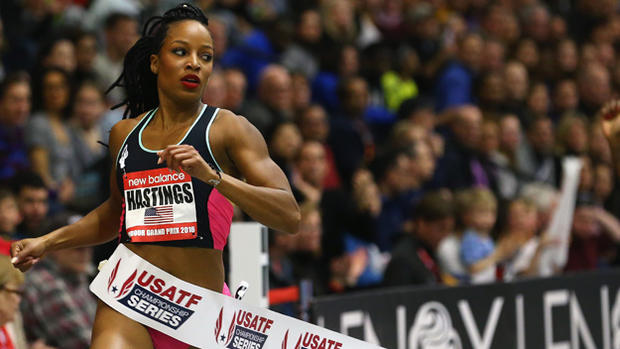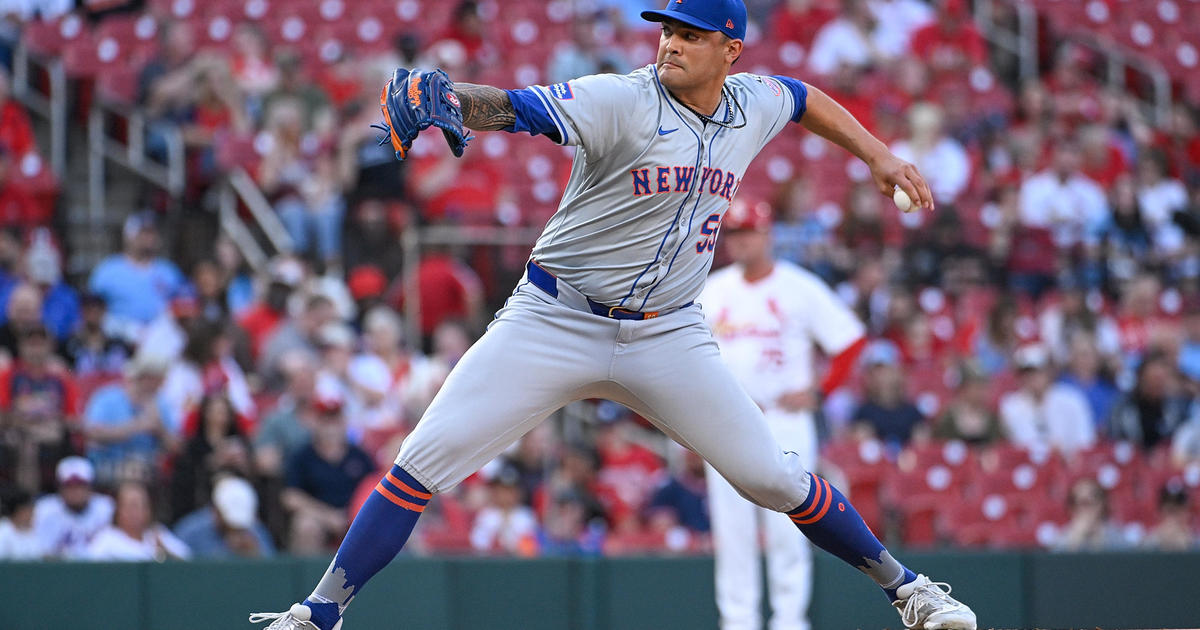Natasha Hastings, Brooklyn's '400-Meter Diva,' Eyes More Olympic Gold
By Steve Silverman
» More Columns
Natasha Hastings is something of a track and field diva.
As the Brooklyn native prepares for the Rio Olympics, it is not enough for her to perform well in her heats in the 400 meters, advance to the finals and win a gold medal. Hastings wants to do all that, and she wants to look good while doing it.
She understands it's her performance that will represent the biggest part of her legacy, but she is not going to come out on the track looking anything but her best.
There is a method to her diva-like madness.
MORE: NJ Muslim Fencer Taking On More Than Her Opponents At Rio Olympics
"If you look good, you feel good. If you feel good, you run good," Hastings explained.
"That's why I run in fake eyelashes and purple hair."
Her personal style gets her noticed as she readies herself for a position on track and field's biggest stage. At the age of 30, Hastings is once again in top form, even though most of the world's best competition is quite a bit younger.
Hastings has been able to maintain her position at or near the top of the 400-meter mountain because she understands what it takes for her to win, and she works hard to build on her strengths. Hastings tends to concentrate on her sprinting as she prepares for her event, even if it goes against the grain of how most 400-meter runners prepare.
"Because I'm a quarter-miler, most people think I do 500s and 600s and overdistance (training)," she says. "I train like a short sprinter. I do a lot of 150s, 200s, 250s. The 250s are my sweet spot. I love 250s."
Most 400-meter runners do more of the distance training that begins with a 300-meter run and then goes progressively longer from that point. But Hastings clearly knows her own body and what works best for her.
At this point in her career, she varies from what the "book" says about training for her event. She follows her own schedule – while collaborating with coach Darryl Woodson -- and the idea is to peak at the time she begins her Olympic competition.
"The older we get, the smarter we have to be," she says. "By no means am I old, but the same things I could do or have to do at 22 I don't necessarily have to do. I think as we get older in sports, learning your body and learning the things your body responds well to or doesn't respond well to is important."
Hastings has been a star on the world stage since winning a gold medal as part of the U.S. women's 4x400-meter relay team in the Beijing Olympics in 2008. Since that time, she has won 4x400-meter gold (2010), silver (2013) and bronze medals (2012) at the outdoor and indoor world championships along with the 2012 indoor bronze medal in the 400 meters.
MORE: NJ Swimmer Connor Jaeger Returns To Olympics With A New Focus
Time and experience in her sport have taught Hastings how to train and how to prepare for a peak performance in the Olympics.
"This is our time, and there is a lot of pressure," Hastings explained. "But that's the reality of the situation, and it's a good thing when the whole world is watching you perform."
Hastings believes there are no absolute answers when it comes to preparing for a huge event like the Olympics or a full track and field season. She believes in moderation when it comes to training and her overall mindset.
"In the season, I'm very mindful of the things I eat, but when I am too hard or too strict, I am setting up for failure," Hastings explained to Sports Illustrated earlier this year. "If I want a scoop of ice cream at the end of the week and I feel I had a good week of training, then I'm going to have a scoop. But not 10 scoops. Everything has to be done in moderation, and you have to know your body."
It has taken a while for Hastings to come to that conclusion because she is not the usual prototype for a 400-meter runner. At 5-foot-8, 135 pounds, she has more size than most of her competitors.
At various points in her career, she has been told that she has been "too big" to succeed in her sport. That kind of attitude has just fueled her desire to succeed.
Hastings likes to motivate herself by playing the underdog card in her own mind. It's a familiar story in sports, and it's one that has worked quite well across the sporting landscape. An athlete or a team will hear critical words, and use that as motivation.
It has been successful for Hastings to this point, and it may help her win another Olympic gold medal in Rio next month.
Follow Steve on Twitter at @ProFootballBoy




